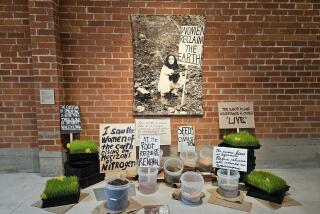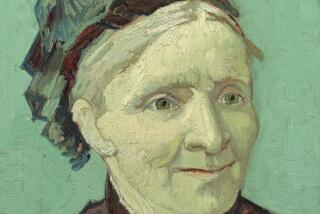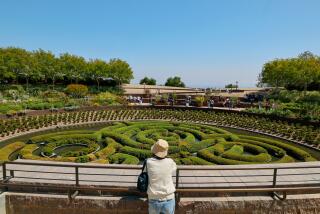Review: Nature and culture in the work of Alastair Mackie
- Share via
The materials that Alastair Mackie uses in his work at Gusford--wasp nests, cuttlebone, hornets--seem at first to be radical choices, but painters have long extracted pigments from minerals, plants and insects, and sculptors have carved upon natural matter from tusks to trees.
Before synthetics, there was no alternative. Today’s menu of material options is limitless. There is no longer a default setting for studio supplies. What counts, then, is intentionality over gratuitousness.
Mackie, from Cornwall, England, indulges in a bit of showmanship, taking advantage of the shock value of his materials in a grid of specimen-pinned hornet heads, for instance.
PHOTOS: Arts and culture in pictures by The Times
But for the most part, this selection of works from the past five years reads as varied, thoughtful musings on the notion of denaturing.
He renders the wasp nests into pulp, and the pulp into nondescript, uniform sheets of paper set in a stack on the floor. Similarly, he grinds the cuttlebone into a substance that he then casts into hexagonal tiles with moire-patterned striated surfaces.
With post-minimalist flair, nature is transformed into culture, subjected to human-imposed order; the raw becomes cooked. In these pieces, Mackie’s practice feels anti-alchemical.
In one quietly affecting sculpture, he enacts a full loop, fashioning a dense log of wooden matchsticks back into the form of a tree branch. Origin becomes destination becomes origin again: an act of re-naturing that hums with lovely, quiet friction.
Gusford, 7016 Melrose Ave., (323) 452-9563, through Oct. 26. Closed Sunday and Monday. www.gusfordgallery.com
More to Read
The biggest entertainment stories
Get our big stories about Hollywood, film, television, music, arts, culture and more right in your inbox as soon as they publish.
You may occasionally receive promotional content from the Los Angeles Times.










